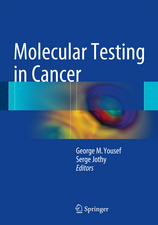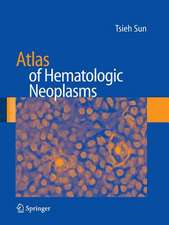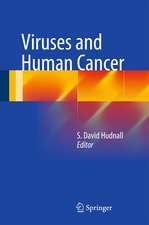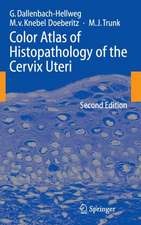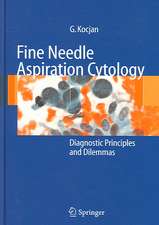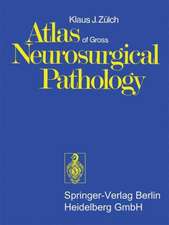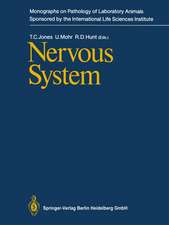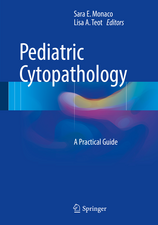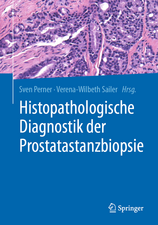Guidelines for Molecular Analysis in Archive Tissues
Editat de Giorgio Stantaen Limba Engleză Paperback – 23 aug 2016
| Toate formatele și edițiile | Preț | Express |
|---|---|---|
| Paperback (1) | 787.93 lei 39-44 zile | |
| Springer Berlin, Heidelberg – 23 aug 2016 | 787.93 lei 39-44 zile | |
| Hardback (1) | 860.75 lei 3-5 săpt. | |
| Springer Berlin, Heidelberg – 27 iun 2011 | 860.75 lei 3-5 săpt. |
Preț: 787.93 lei
Preț vechi: 829.40 lei
-5% Nou
Puncte Express: 1182
Preț estimativ în valută:
150.81€ • 156.85$ • 126.38£
150.81€ • 156.85$ • 126.38£
Carte tipărită la comandă
Livrare economică 10-15 martie
Preluare comenzi: 021 569.72.76
Specificații
ISBN-13: 9783662519844
ISBN-10: 3662519844
Pagini: 323
Ilustrații: XVI, 323 p.
Dimensiuni: 193 x 260 mm
Ediția:2011
Editura: Springer Berlin, Heidelberg
Colecția Springer
Locul publicării:Berlin, Heidelberg, Germany
ISBN-10: 3662519844
Pagini: 323
Ilustrații: XVI, 323 p.
Dimensiuni: 193 x 260 mm
Ediția:2011
Editura: Springer Berlin, Heidelberg
Colecția Springer
Locul publicării:Berlin, Heidelberg, Germany
Cuprins
Introduction.- Archive Tissues.- Pre-Analytical Treatment of Tissues.- Dissection of Tissue Components.- Extraction, Purification, Quantification and Quality Assessment of Nucleic Acids.- Reverse Transcription (RT).- Nucleic Acid Amplification.- DNA Sequencing.- Microsatellite Analysis.- Methylation Analysis.- Analysis of Copy Number Variations.- Microarrays.- Protein Extraction in Archive Tissues.- Protein Electrophoretic Separation.- Protein Immunodetection.- Mass Spectrometry.- Elements of Good Laboratory Practice..- DNA Sequencing.- Microsatellite Analysis.- Methylation Analysis.- Analysis of Copy Number Variations.- Microarrays.- Protein Extraction in Archive Tissues.- Protein Electrophoretic Separation.- Protein Immunodetection.- Mass Spectrometry.- Elements of Good Laboratory Practice.
Recenzii
From the reviews:
“This is a valuable resource that provides precise guidelines for molecular analysis of archive tissues essential for pathologists and researchers involved in translational research and diagnostics. … students, laboratory technicians, and physician-scientists interested in molecular analysis of archive tissues will find this book useful. … The clear explanations should enable even less experienced researchers to follow the protocols.” (Omer Iqbal, Doody’s Review Service, December, 2011)
“This is a valuable resource that provides precise guidelines for molecular analysis of archive tissues essential for pathologists and researchers involved in translational research and diagnostics. … students, laboratory technicians, and physician-scientists interested in molecular analysis of archive tissues will find this book useful. … The clear explanations should enable even less experienced researchers to follow the protocols.” (Omer Iqbal, Doody’s Review Service, December, 2011)
Notă biografică
Giorgio Stanta is Professor of Pathology at the University of Trieste. For many years his main interest has been the application of molecular analysis to fixed and paraffin-embedded tissues (all human tissues of biopsy or surgical origin), called “archive tissues”. This research line started thanks to his collaboration with the researchers who first applied molecular biology techniques to human diseases at Yale University, where Professor Stanta worked from 1985 to 1988. Since then he has developed several methods, in particular for RNA analysis. Professor Stanta is the coordinator of the European project "Archive Tissues: Improving Molecular Medicine Research and Clinical Practice - IMPACTS" (www.impactsnetwork.eu), involving around 20 European universities in 11 different countries. He is taking part as an expert in the Biobanking and Biomolecular Resources Research European Infrastructure (BBMRI). He is also on the Managing Board of the "Molecular Pathology Study Group" of the European Society of Pathology.
Textul de pe ultima copertă
A huge amount of fixed and paraffin-embedded tissue is stored in every hospital. This is very precious material that can be used for translational research and for diagnostics. The molecular methods employed for analysis of these tissues are similar to the usual molecular biology and proteomics methods, but reliable results can be obtained only if specific steps are followed with great care.
This book provides detailed and precise guidelines for molecular analysis of archive tissues and will serve as an invaluable aid for researchers and pathologists involved in translational research and diagnostics. The topics addressed include pre-analytical treatment of tissues, isolation of tissue components, DNA and RNA methods, proteomics methods, internal quality control procedures, and storage and treatment of reagents. Clear notes and explanations are included to simplify use of the protocols for the less experienced. The authors are a group of acknowledged experts who have developed the described methods and validated them within the European project "Archive Tissues: Improving Molecular Medicine Research and Clinical Practice - IMPACTS", which has involved 21 leading institutions in 11 countries.
This book provides detailed and precise guidelines for molecular analysis of archive tissues and will serve as an invaluable aid for researchers and pathologists involved in translational research and diagnostics. The topics addressed include pre-analytical treatment of tissues, isolation of tissue components, DNA and RNA methods, proteomics methods, internal quality control procedures, and storage and treatment of reagents. Clear notes and explanations are included to simplify use of the protocols for the less experienced. The authors are a group of acknowledged experts who have developed the described methods and validated them within the European project "Archive Tissues: Improving Molecular Medicine Research and Clinical Practice - IMPACTS", which has involved 21 leading institutions in 11 countries.
Caracteristici
Provides detailed guidelines for molecular analysis of archive tissues An invaluable aid for researchers and pathologists involved in translational research and diagnostics Caters for the needs of the less experienced through the inclusion of clear notes and explanations Written by experts who have developed the described methods and validated them within the framework of a multi-institution European project Includes supplementary material: sn.pub/extras


